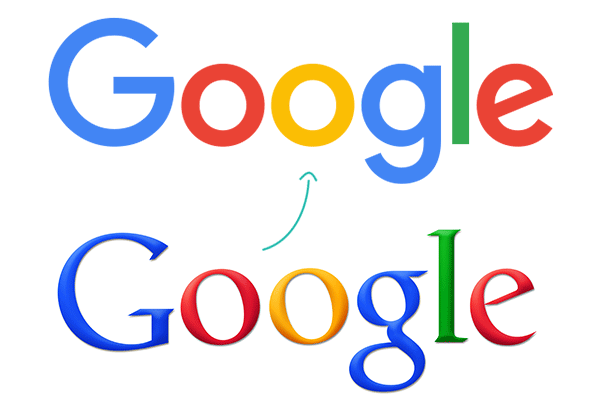The behemoth that is Google might seem about as far from a small business as you can get, but the company’s recent rebrand, which included a redesigned logo and name change, has a lot of valuable lessons for small businesses. So what can we learn from the Google rebrand?
Be responsive to customer needs.
All businesses today need to be accessible from the mobile web. Google’s new logo has softer colors and a new font–sans-serif–which is more modern than the old one but more importantly, works well on all screens, not just desktops. Sans-serif shrinks down to smaller sizes more easily than other fonts, which is better for smaller screens and lower resolutions. And Google’s new mobile logo is a 306-byte, four-color capital G—easy to load and easy to see.
Now that consumers spend more of their media time on mobile devices than desktop computers, it’s more critical than ever that your business reach customers through mobile search and display. Make sure your business’ site is optimized for the mobile web—that means it loads quickly, is easy to navigate and makes it easy for customers to locate and contact you.
Have a conversation with customers.
Because Google is Google, it’s new logo and company name were covered extensively in the press. But the company also posted a blog post explaining what they were doing and why, and included two videos as well, one that gave the entire evolution of its logo and the other about the variety of offerings Google has had over the years. As a small business, your customer base may be smaller but you still want to communicate about changes to your brand and let customers use social media to give their feedback. Google’s blog post received nearly 9,600 comments from Google + users alone.
It’s bigger than the logo.
Google’s logo change isn’t just about changing the logo. Change gets consumers’ attention. A new logo is a way to draw attention to your company and news about changes you may be making and the reasons behind those changes. Case and point-when Google announced the new re-brand and direction, it was the #1 topic trending across all social media platforms.
Be consistent across all your products and services.
Sure, Google changed things up but they also kept some things the same. Google’s new parent company Alphabet has the same branding and look to its logo that’s rolling out across all of Google’s products. The company is also still using the same four colors it always has.
Geoff Cook, a founding partner at the design firm Base Design told Wired magazine the new logo and rebranding is akin to a smart system. “Like an overarching visual language that really allows us, the users to connect the dots across their ecosystem from product to product,” said Cook. To help maintain strong recall and recognition of your brand with prospects and customers, make sure your brand identity and logo are consistent across all your products, services, websites and social media.
Understanding before changing.
Remember that before you embark on a rebrand, you should understand what a rebrand really means. It’s not just changing the business name and logo, but the brand’s identity. To understand what that identity is and means, you have to ask customers and prospective customers what they think, feel and expect when they interact with the business or its product/service, according to Tara Stoutenborough, a principal at marketing communications firm Strategies. “Those expectations are the brand,” she says.
Ask yourself what qualities, characteristics and feelings you want people to think about when they envision your business’ name and logo and what you believe sets your business apart from its competition. Use the customer feedback Stoutenborough recommended to find out what’s working and what’s not working. Once you know that, you can change whatever part of the brand that isn’t connecting with your target market and create an authentic one that does.
Rebranding can make a big impact on your small business. The recent Google rebrand gives you valuable insights into how to reshape your brand and the best way to engage prospective and current customers in the process.
